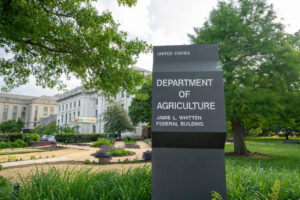Fertilizer is one of the most commonly used crop inputs around the world, but it comes with a heavy price tag in the form of environmental harm and detriments to soil health. Bio-fertilizer startup Anuvia is hoping to address this issue by giving farmers better yields while also sequestering carbon and reducing greenhouse gas emissions.
“The problem with conventional fertilizer is that it’s chemically produced so there is no carbon component at all,” CEO Amy Yoder tells AFN.
“When you put those soils out, you have to put carbon storage back in a different way. Also, when you apply conventional fertilizer, up to 50% of it can be lost in the environment and that is what contributes to greenhouse gas emissions as well as leaching into water systems, causing algae blooms and other issues each spring.”
Anuvia today announced a $103 million Series C round co-led by TPG ART and Pontifax AgTech. Sustainable infrastructure investor Generate and industrial and energy-focused Piva Capital also participated in the round.
The Florida-based startup’s ag fertilizer, SymTRX, is a plug-and-play product that works with farmers’ existing equipment. It targets corn, soybeans, wheat, canola, sugar beans, and sugar beets. Anuvia claims the product improves crop yields and boosts farmer RoI up to five times, as well as helping to return carbon to the ground in the form of an organic matrix.
“Our technology kind of mimics nature; we just do it very quickly. We take waste materials and we break them down,” Yoder explains.
“We can add nutrients [that] are positive and negative charges. If you think about what happens in nature today, you put something out like compost and that actually turns into soil as it breaks down over time. We do something similar to that on a bigger scale.”
SymTRX, is already available commercially in the US. Anuvia anticipates usage to spread to 20 million acres by 2025.
The startup will use the new funding will go towards increasing its production capacity, which involves a new commercial facility in Plant City, Florida. Last month, it announced a commercial agreement with The Mosaic Company, a leading producer of phosphate and potash, that will exclusively license SymTRX in the US where it will be sold as Susterra. Mosaic also recently joined LatAm agrifoodtech VC firm SP Ventures’ second close.
Quantifying impact
To quantify the impact of its product, Anuvia retained consulting firm Environmental Resources Management (ERM) to measure SymTRX’s performance versus traditional fertilizers on corn, rice, and cotton. The firm concluded that Anuvia reduces greenhouse gas production by up to 32% compared to conventional fertilizer.
ERM also concluded that every one million acres that use Anuvia’s products remove the equivalent, in emissions terms, of up to 30,000 vehicles from the road. There are 90 million acres of corn alone in the US, it notes, meaning the ultimate impact could equate to 1.8 million vehicles being parked for good.
The startup’s ability to tackle a variety of concerns with one product is what brought return investor Pontifax back to the table, according to the firm’s co-founder and managing partner Ben Belldegrun.
“Given the focus on reaching a net-zero emissions standard, there are a lot of technologies focused on sustainable crop inputs. However, there are not many companies like Anuvia who have demonstrated real commercial traction and adoption by both distributors and growers,” Belldegrun tells AFN.
He also sees the carbon credit writing on the wall, and the growing opportunity for farmers to get paid for being able to quantify their carbon-related farming practices.
“Consumer and regulatory pressures have been driving a move towards more sustainable crop inputs for some time, but we now see US President Joe Biden’s climate change plan […] call for the establishment of a ‘carbon bank’ that would pay farmers, ranchers, and foresters to store carbon using regenerative agriculture practices,” Belldegrun says.
How do farmers really feel about fertilizer alternatives?
A variety of new products aimed at replacing conventional fertilizers have been hitting the shelves. Investors seem to be keen on the concept – but what about farmers?
To get its product in farmers’ hands, Anuvia relies primarily on existing ag retail channels. It also works directly with farmers to educate them about how its product is different from conventional fertilizer.
“Farmers have been really receptive to our product. And they grasp it quickly because they understand soil health,” Yoder says.
“Farmers work pretty diligently to make sure their practices are sustainable because they’re really in the business of making sure that their land produces year on year on year for generations.”
What ultimately convinces them to use a product, however, is its performance.
“It’s their business so they like the increased performance, and then they like the added benefit from an environmental standpoint,” Yoder explains.
Price-wise, she describes Anuvia’s offering as being competitive with existing products, with a premium of roughly $5 per acre.
“With a five-times RoI, it pays for itself very, very quickly,” she adds. “But we needed to be right in the same range as conventional fertilizer because [it’s] a big expense from a farmer’s perspective. We wanted to make sure that farmers would be compelled to use it.”




